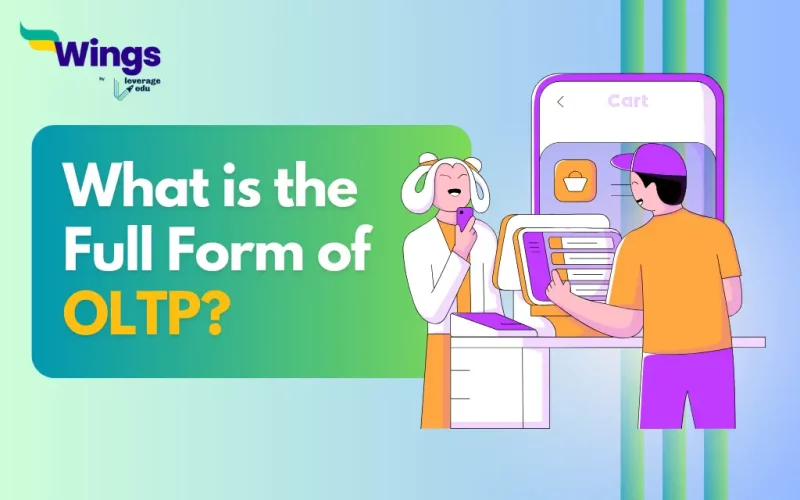The full form of OLTP is Online Transactional Processing. It is a type of data processing that manages and facilitates transaction-oriented applications generally for data entry and retrieval in real-time. Furthermore, OLTP systems are crucial for businesses that require immediate and accurate data processing to support their daily operations. Moreover, the development of OLTP makes it easy to use for frontline workers such as cashiers or for customer self-service applications like e-commerce and online banking.
History of OLTP
Table of Contents [show]
IBM launched OLTP in the year 1970.
- It was made operational only for American Airlines.
- However, at first, the transactions were only operational on IBM 7090 computers.
- Later, it started functioning in hotels, credit cards, banks, companies, etc.
Also Read: What is the Full Form of NEFT?
What are the Characteristics of OLTP?
In addition, the characteristics of OLTP are as follows:
- Concurrency Control: OLTP systems must manage multiple transactions altogether without conflicts. Additionally, concurrency control guarantees that transactions preserve the integrity of data.
- Transaction Management: Moreover, OLTP systems highlight the processing of individual transactions. Each transaction applies a small, well-defined set of procedures, and the system makes sure that transactions are in their entirety or not at all.
- Data Normalization: OLTP databases are created with normalized data structures to minimize redundancy and maintain data consistency. This especially makes it efficient for transactional processing but may differ from data warehousing approaches.
- Fast Response Time: Apart from this, OLTP systems need low latency and fast response times to support real-time interactions. Moreover, users expect quick responses when entering or retrieving data from the system.
Also Read: What is the Full Form of MOP?
What are the Advantages of OLTP?
The advantages of OLTP are:
- Real-time Processing: They have real-time processing capabilities further allowing businesses to respond swiftly to transactions and make timely decisions based on the latest data.
- Data Accuracy: To maintain data integrity, OLTP systems ensure that transactions are accurate and reliable, thus diminishing the risk of errors in crucial business processes.
- Optimization for Read and Write Operations: The optimization for OLTP databases includes read and write operations, further making them fit for applications that involve frequent data modifications.
Also Read: What is the Full Form of UPI?
What are the Disadvantages of OLTP?
Some of the disadvantages of OLTP are –
- The system is at risk of being vulnerable to cyber-attacks or unauthorised access
- Should there be a problem with the equipment or a power outage, there’s a chance that data could be lost
- Handling multiple requests at the same time can be challenging
- An overload could cause servers to become unresponsive
What are the Examples of OLTP?
The examples of OLTP systems are as follows:
- ATMs and online banking applications
- Credit card payment processing in-store or online
- Order entry systems in both retail and back-office environments utilize transaction processing to efficiently handle customer orders.
- Different online bookings such as ticketing and reservation systems, rely on instantaneous and accurate reservation confirmations.
- Record-keeping functions, spanning health records, inventory control, production scheduling, claims processing, customer service ticketing, and numerous other applications, heavily depend on maintaining real-time and accurate data.
Popular Full Forms
We hope this blog has helped you understand the full form of OLTP and everything related to it. If you want to know more, find the 300+ full forms list on our blog. In the world of short forms, you can rely on the Leverage edu page to know about more full forms like this! Connect with us study abroad experts to achieve your international dream today!
 One app for all your study abroad needs
One app for all your study abroad needs















 45,000+ students trusted us with their dreams. Take the first step today!
45,000+ students trusted us with their dreams. Take the first step today!
